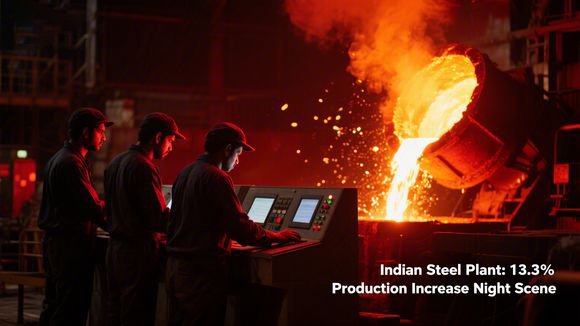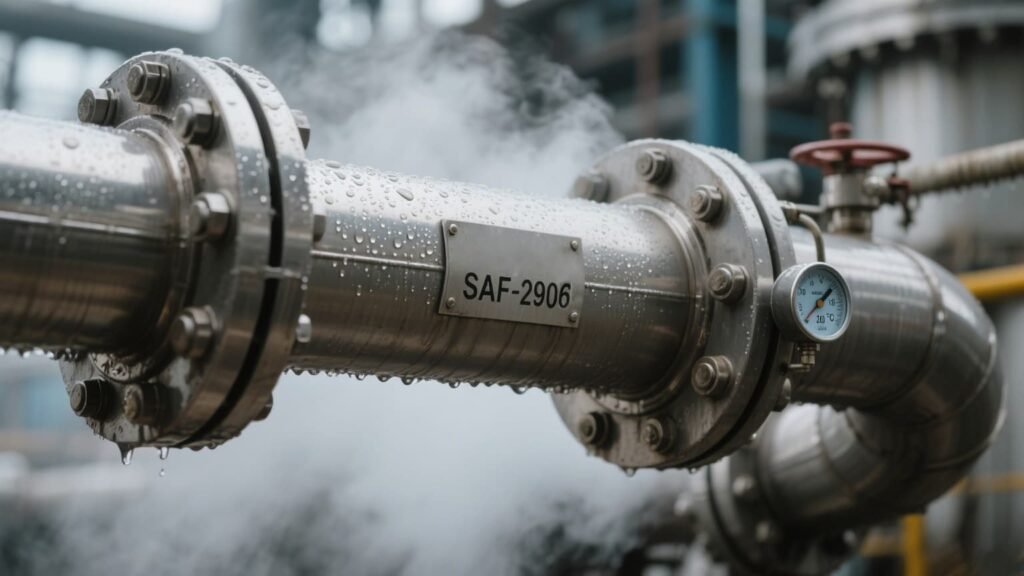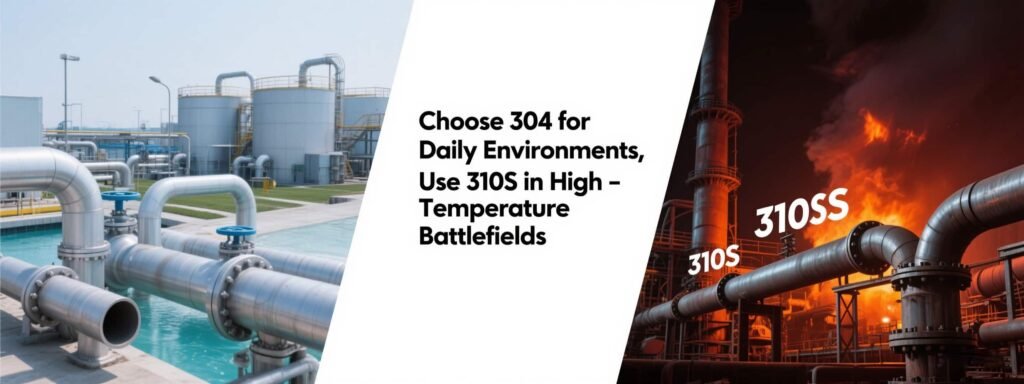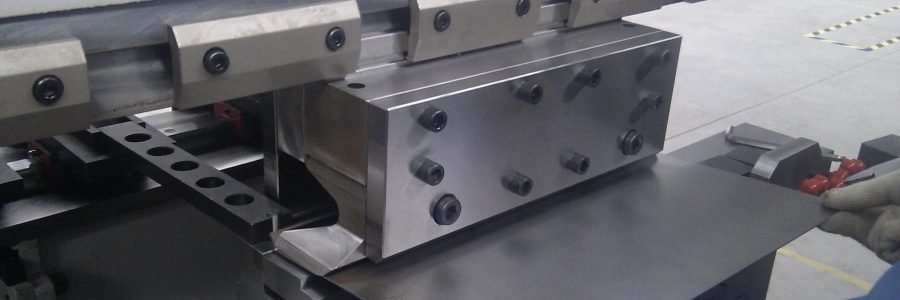What is the difference between 410 and ss316l stainless steel?
410 stainless steel vs 316
316 stainless steel and 410 stainless steel are two common stainless steel materials, but due to their differences in chemical composition, crystal structure and performance, they are suitable for different application scenarios.
316 stainless steel is austenitic stainless steel, and 410 stainless steel is martensitic stainless steel. The two stainless steels have their own performance advantages and disadvantages. Walmay Steel puts the two materials together and makes a detailed comparison to facilitate our customers to better choose stainless steel materials and apply them to projects.
What is SS 410 ?
410 stainless is a stainless steel grade produced in accordance with the American ASTM standard S41000 (American AISI, ASTM), which is a martensitic stainless steel. It contains 0.15% carbon and 13% chromium.
410 stainless steel material has excellent corrosion resistance, especially in chloride environments due to the addition of Mo elements. It has higher strength and hardness and good wear and abrasion resistance.
410 ss heat treatment: solution treatment (℃) 800-900 slow cooling or 750 fast cooling.
Scope of application: general blades, mechanical parts, Class 1 tableware (spoons, forks, knives, etc.).
is 410 ss magnetic?
Weak magnetism: The magnetism of 410 stainless steel is relatively weak, and its magnetism mainly comes from the iron element inside.
What is SS 316?
316 stainless steel is a grade of stainless steel produced according to the American ASTM standard. SUS316 is an austenitic stainless steel.
Chemical composition: Contains chromium (Cr), nickel (Ni) and molybdenum (Mo), with a low carbon content (≤0.08%).
SUS316 stainless steel has good plasticity, toughness, cold deformation and welding process performance, and 316 has good high temperature strength.
(1) The cold-rolled product has good gloss;
(2) Due to the addition of Mo (2~3%), the corrosion resistance, especially the pitting resistance, is excellent
(3) Excellent high temperature strength
(4) Excellent work hardening (weak magnetism after processing)
(5) No magnetism in the solid solution state
(6) Good welding performance.
What is the difference between 410 vs 316 stainless steel?
stainless steel 410 vs 316 corrosion resistance
| Chemical elements | C | Si | Mn | P | S | Cr | Ni | Mo | N |
| 316stainless steel (%) | ≤0.08 | ≤1.00 | ≤2.00 | ≤0.045 | ≤0.030 | 16.00-18.00 | 10.00-14.00 | 2.00-3.00 | ≤0.10 |
| 410stainless steel (%) | ≤0.15 | ≤1.00 | ≤1.00 | ≤0.040 | ≤0.030 | 11.50-13.50 | – | – | – |
316 stainless: Contains high levels of chromium, nickel, and molybdenum, and has excellent corrosion resistance, especially in chloride environments. The low carbon content improves its weldability and resistance to intergranular corrosion.
ss410 steel: Contains high levels of chromium and carbon, no nickel and molybdenum, and has high strength and hardness, but poor corrosion resistance, especially in chloride environments.
410 stainless steel vs 316 machinability
s.steel 316 processing process
Forming: easy to stamp, stretch, and bend.
Welding: excellent welding performance, but pay attention to the risk of intergranular corrosion after welding.
Cutting: good cutting performance, but appropriate tools and coolant must be used.
ss 410 material processing process
Forming: general forming performance, suitable for simple shape processing.
Welding: poor welding performance, needs preheating and post-heat treatment.
Cutting: good cutting performance, but pay attention to tool wear.
In general: 316 stainless steel: is easy to form and weld, and is suitable for complex parts processing.
410s: poor forming and welding performance, suitable for simple parts processing.
316 vs 410 stainless steel tensile strength
| Properties | stainless steel 316 | 410 stainless steel | Differences explained |
| Yield strength (annealed) | ≥205 MPa | ≥345 MPa | 410 has higher yield strength. |
| Tensile strength | 515-690 MPa | 485-620 MPa | 316 has slightly higher tensile strength. |
| Elongation (50mm) | ≥40% | ≥20% | 316 has higher elongation and better plasticity. |
| Hardness (HB) | ≤217 | ≤217 | Same. |
| Modulus of elasticity | 193 GPa | 200 GPa | 410 has slightly higher elastic modulus. |
The tensile strength of aisi 316 and 410 stainless steel is different.
The tensile strength of stainless 316 is about 580 MPa, while the tensile strength of 410 stainless steel is about 655 MPa.
Under the same stress conditions, 410 stainless steel has a higher tensile strength and can withstand greater tensile forces.
410 stainless steel vs 316 Heat Resistance
| Properties | 316 stainless steel | 410 stainless steel | Differences explained |
| Density | 8.00 g/cm³ | 7.75 g/cm³ | 316 has a slightly higher density. |
| Melting point | 1375-1400 °C | 1480-1530 °C | 410 has a higher melting point. |
| Coefficient of thermal expansion | 16.5 µm/m·°C | 9.9 µm/m·°C | 410 has a lower coefficient of thermal expansion. |
| Thermal conductivity | 16.3 W/m·K | 24.9 W/m·K | 410 has a higher thermal conductivity. |
| Resistivity | 0.74 µΩ·m | 0.59 µΩ·m | 410 has a lower resistivity. |
316 stainless steel material has better heat resistance than 410 stainless steel.
316 stainless steel is a molybdenum-containing austenitic stainless steel with very good corrosion resistance and heat resistance, especially suitable for use in chloride environments.
It can work at temperatures up to about 950 degrees Celsius. It can still maintain stability at high temperatures, but its strength is lower.
Although 410 stainless steel also has a certain heat resistance, its heat resistance is not as good as 316 stainless steel, and it is usually suitable for lower temperature environments.
316 vs 410 stainless steel applications
1、316 stainless steel is widely used in the following fields due to its excellent corrosion resistance, heat resistance and processing performance:
1.1 Chemical equipment: kettles, heat exchangers, pipes, valves, pumps.
1.2 Seawater treatment equipment, ship parts, and offshore platform structures in marine engineering.
1.3 Applications in medical devices: surgical instruments, implants, and medical containers.
1.4 Applications in food processing: storage tanks, pipes, tableware, and kitchen equipment.
1.5 Applications in architectural decoration: curtain walls, handrails, doors and windows, and decorative panels.
1.6 Applications in household appliances: refrigerators, washing machines, microwave ovens, and dishwashers.
2. Application scope of 410 stainless steel
Due to its high strength, hardness and wear resistance, 410 stainless steel is widely used in the following fields:
2.1 Knife application: kitchen knives, scissors, industrial knives.
2.2 Automotive parts application: exhaust pipes, decorative parts, fuel system parts.
2.3 Household appliances application: washing machine inner drum, microwave oven shell, oven parts.
2.4 Building decoration application: decorative panels, door and window accessories, stair handrails.
2.5 Industrial equipment application: pump shafts, valve parts, mechanical parts.
Conclusion
316 stainless steel is an austenitic stainless steel with excellent corrosion resistance and processing performance, but the cost is high.
410 stainless steel is a martensitic stainless steel with high strength and hardness, but poor corrosion resistance and welding performance.
Both contain chromium and have certain corrosion resistance.
Both are widely used in industrial, construction and household fields.
Product Advantages of Walmay Steel
High-quality products: Walmay Steel’s 316 and 410 stainless steel products are in line with international standards and have excellent performance.
Price competitiveness: By optimizing the production process, we provide competitive prices.
Fast delivery: The efficient logistics system ensures timely delivery of products.
Customized services: Provide personalized products and services according to customer needs.
Tabs:410 ss sheet ,316 ss sheet
Table of Contents
Recent Posts
-
 U.S. Stainless Steel Tariffs Jump to 50% - How Companies Are Adapting01 8 月 2025
U.S. Stainless Steel Tariffs Jump to 50% - How Companies Are Adapting01 8 月 2025 -
 Global Steel Output Drops 5.8% in June - India Bucks the Trend31 7 月 2025
Global Steel Output Drops 5.8% in June - India Bucks the Trend31 7 月 2025 -
 Alleima's New Super Duplex Steel Fights Urea Plant Corrosion29 7 月 2025
Alleima's New Super Duplex Steel Fights Urea Plant Corrosion29 7 月 2025 -
 310S vs 304 Stainless Steel Pipes: Which Should You Choose?28 7 月 2025
310S vs 304 Stainless Steel Pipes: Which Should You Choose?28 7 月 2025
Have Any Question?
High-quality manufacturers in the stainless steel industry, feel free to ask





